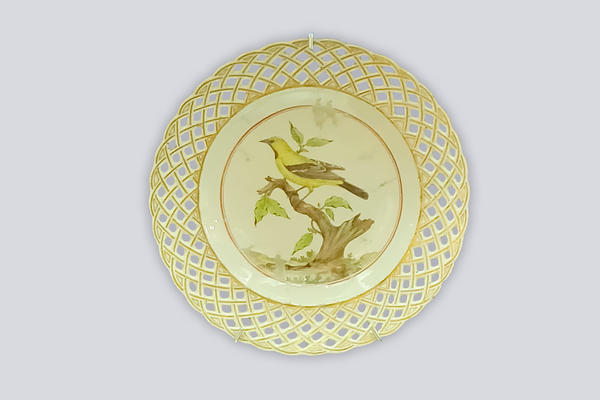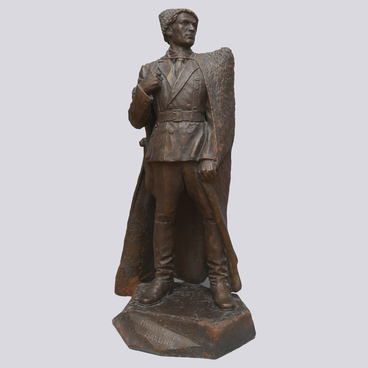The first porcelain began to be made in China. It steadily became popular throughout the East and by the 13th century appeared in Europe. Porcelain objects were highly valued and cost more than gold and silk. It was really so, because the secret of producing this exquisite material was unknown outside China.
Plate with Oriole’s image
Creation period
1760s
Dimensions
22,5x22,5 cm
Diameter – 22.5 cm
Diameter – 22.5 cm
Technique
Industrial production. Over glaze painting, gilding
Exhibition
0
Open in app#1
Imperial Porcelain Factory
Plate with Oriole’s image
#4
#5
European masters unsuccessfully tried to reproduce the unique technology of porcelain creation for several centuries. Johann Friedrich Böttger, a German scientist, was the first one who managed to do it only in the early 18th century.
#6
When he was young, he was fond of alchemy and tried to get a philosopher’s stone, which, according to the legend, could cure all diseases and turn any metal into gold. Böttger was not successful on this field, however in 1705 he was able to produce first red porcelain, then white. And in 1710 the scientist opened the first porcelain manufactory in Europe in Saxon castle Albrechtsburg. It was the beginning of Meissen porcelain, named after the city where the production was located.
#7
Similar manufactories began to open in other countries soon. All of them jealously guarded the secrets of its porcelain. In Russia, interest in this material arose at the very top. Peter I personally provided first funds for experiments and search of the necessary raw materials for the production of domestic porcelain. Scientists tried both to reveal the composition of the Chinese porcelain and to create their own formula for the basis of Russian-made material.
Empress Elizabeth opened the first in the Russian Empire Porcelin manufactory in St. Petersburg, which later became the Imperial porcelain factory. Dmitry Vinogradov, one of the masters at that factory, invented the first recipe for porcelain based on the materials that were mined in Russia.
#8
A real researcher and scientist, an associate of Mikhail Lomonosov, he managed to derive the necessary proportions of substances to create domestic white gold. However, this discovery did not bring him any happiness. Vinogradov was chained to the wall, so he continued to improve the process of making porcelain and no one could reveal the secret composition. Vinogradov died at the age of 38, and not so many masterpieces created with his own hands survived up till now. His masterpieces resembled Chinese and Meissen porcelain in shape and style.
#3
A decorative plate of the Imperial porcelain factory, presented in the exhibition, was made almost immediately after his death. It shows a yellow-brown Oriole sitting on a tree branch. Similar products were released in one series in 1760s, and, according to researchers, all copies were different miniatures: not a single picture was repeated.
#9
National Museum of the Republic of Tatarstan
read morehide
00:00
00:00
1x
Plate with Oriole’s image
Creation period
1760s
Dimensions
22,5x22,5 cm
Diameter – 22.5 cm
Diameter – 22.5 cm
Technique
Industrial production. Over glaze painting, gilding
Exhibition
0
Open in app
Share



